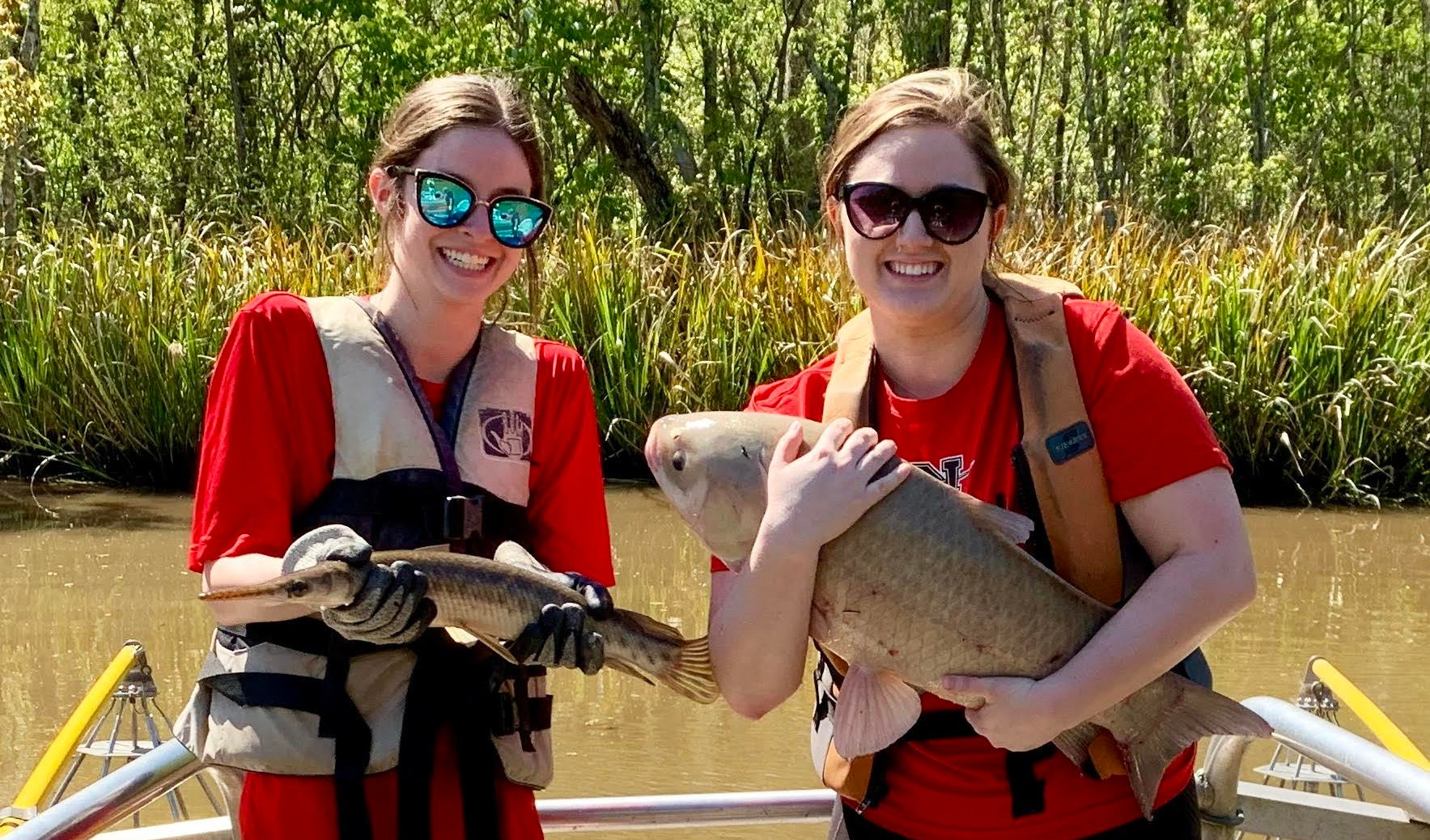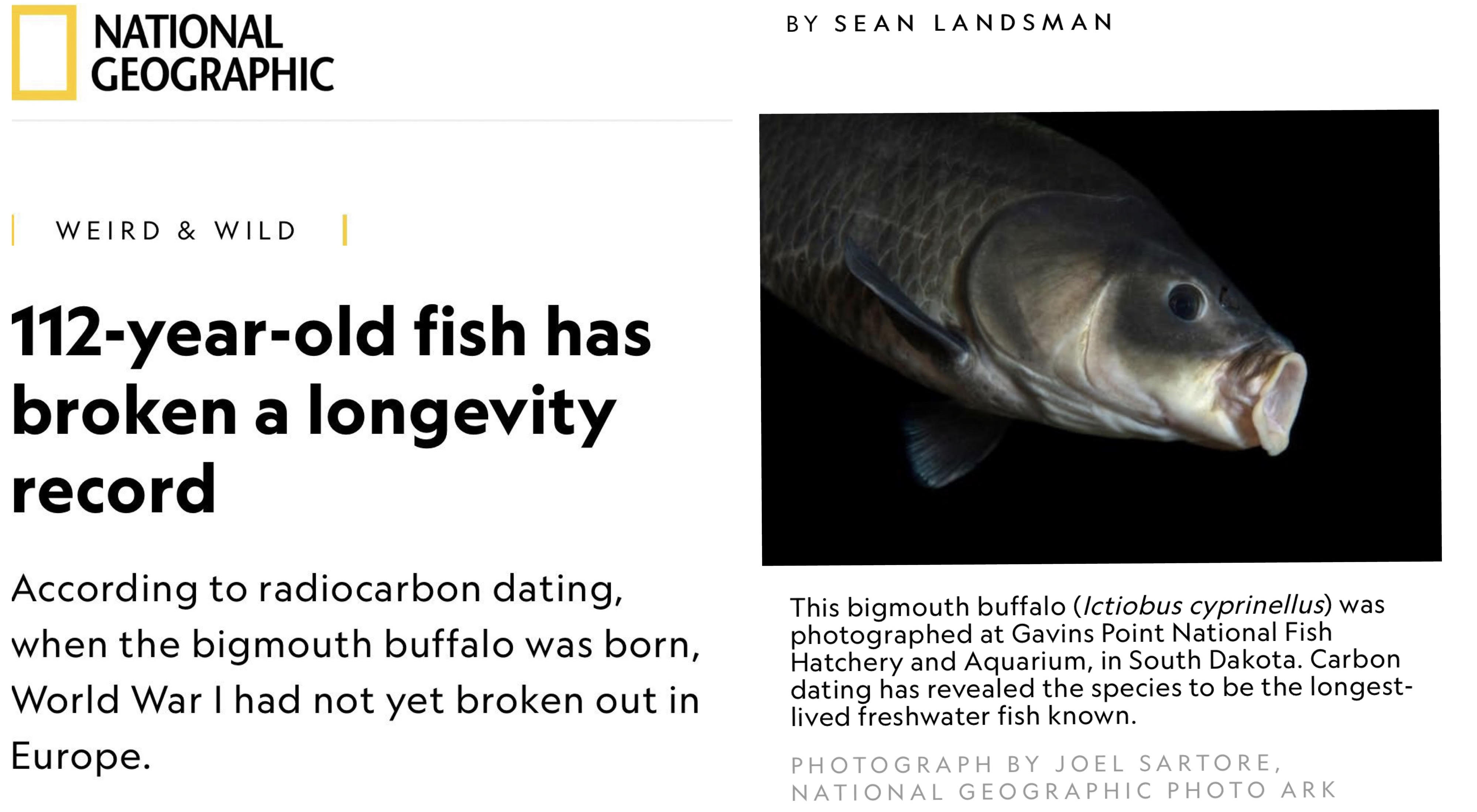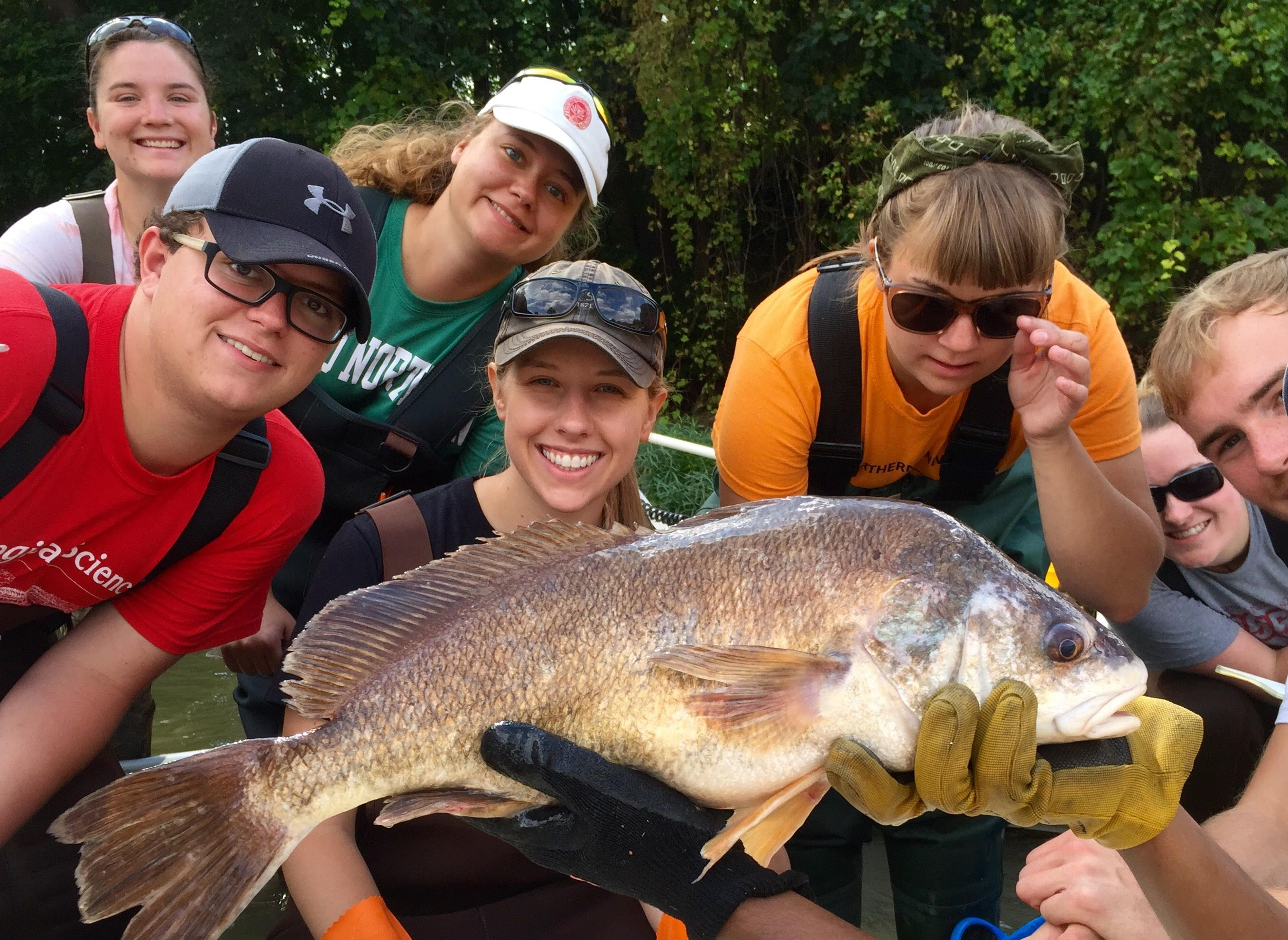
Note: The opinions expressed in this post are those of the author, and do not necessarily represent those of the entire Fisheries Blog team.
Cover Image: Bigmouth Buffalo from Louisiana bayou collected by Nicholls State University graduate student Sarah Fontana.
Many of you have heard the terms rough fish, non-game fish, coarse fish…trash fish. What fishes are these terms referring to? They can vary regionally, but it’s usually a species that particular angler doesn’t want to catch. These fishes aren’t your Largemouth Bass, Rainbow Trout, or Chinook Salmon; more often they are suckers, gars, bowfins, and drum. Historically less popular, members of the latter group are still important components of their native ecosystems, and contribute to biodiversity! Some of the so-called “trash fish” group help maintain ecosystem balance as predators (e.g. gars, bowfins), others can be indicators of good water quality (e.g. suckers). They certainly aren’t trash, even if many unfortunately end up there. A growing number of anglers, scientists, and conservationists have been working to improve public perception of these underdog fishes over the years, but it’s still an uphill battle. Here are two contrasting examples from just last week (I encourage you to read the original articles and have linked to related stories throughout this post)…

In a National Geographic story by fisheries scientist and science communicator Sean Landsman, we learn about new research on the Bigmouth Buffalo, a planktivorous sucker species, often considered a “rough fish” or “trash fish” as they’re deemed undesirable for consumption. Some people even call them “buffalo carp”, which unfortunately lumps them with truly damaging invasive species. Bigmouth Buffalo and other buffalo species are not carp; in fact, as planktivores, Bigmouth Buffalo directly compete with invasive Asian carp (Bighead and Silver Carp)!
So what’s the cool new finding? It’s been discovered that Bigmouth Buffalo can live for over 110 years, making it the oldest freshwater teleost fish on record! Some populations in Minnesota haven’t been able to successfully reproduce since dam construction in the 1930’s that likely cut off passage to their spawning grounds. More research is needed on these fish, and hopefully the new longevity record will help improve the Bigmouth Buffalo’s reputation and garner more conservation support (there are no harvest regulations for the species in all but two of the states where it’s found).

On the same day, an article was posted at Field and Stream entitled: “Fish Dirty and Catch the Trash Fish Slam”. The article proceeds to encourage fishing for three “trash fish” species, Freshwater Drum, Longnose Gar, and Bowfin. While the article inherently encourages anglers to look into traditionally ignored species, using the “trash fish” designation automatically derides these native species and implies they are of lesser value than other fishes. This language reinforces negative attitudes that conservationists are actively trying to change, and can perpetuate wasteful behaviors often associated with “trash fish.” It would benefit conservation efforts if long-standing hunting and fishing publications like Field and Stream would dispose of the “trash fish” label in future articles.

Moving forward, I hope more anglers, fish enthusiasts, and people in general, will come to recognize the value of these traditionally “non-game” or “rough fish” species, and drop the trash terminology altogether. All native species have important roles to play in their respective ecosystems; many of those roles we are yet to uncover, or even fully understand. Some so-called “trash fish” might even lend us a hand in the future…

Reblogged this on Solomon R. David, PhD and commented:
It’s time to dispose of the “trash fish” label when it comes to native fishes!
I have known Patrick Cooney, Steve Midway, and Dana Sacket for many years going back to their days at NCSU. Why was it necessary to preface your post with: “Note: The opinions expressed in this post are those of the author, and do not necessarily represent those of the entire Fisheries Blog team”? I would like to believe that these three fishery biologists would share your beliefs regarding the “trashing” of these fine indigenous species and your prefacing was unnecessary. They should all be standing with you. If you really want to talk about “trash” fish, next time write an article about Rainbow Trout, Brown Trout, and all the “trash” game fish that have been stocked helter skelter throughout the Atlantic Slope drainages.
Hi Bryn, thanks for your comment! While I would expect that Patrick, Steve, and Dana likely do agree with me, it’s been prudent in the past to have the disclaimer and leave responsibility by the post author instead of the entire team, especially in consideration of the teams’ diverse employers. I hope that provides some clarification as to the disclaimer. Thanks again for your support of the blog team!